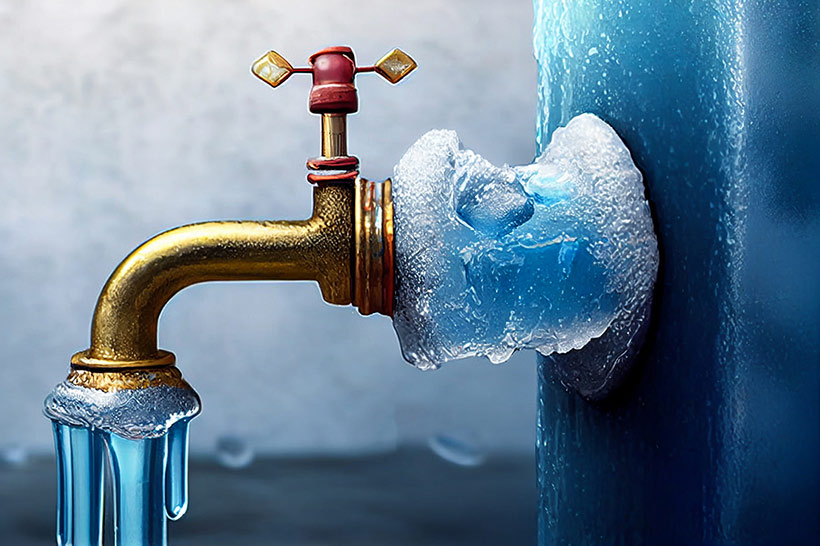Important Tips to Avoid Frozen Pipes in Winter
Book-NowHave you been on the lookout for advise around Preventing and dealing with frozen pipes?

Winter can wreak havoc on your plumbing, particularly by freezing pipes. Below's just how to stop it from taking place and what to do if it does.
Intro
As temperatures drop, the danger of frozen pipelines boosts, potentially leading to pricey fixings and water damage. Comprehending just how to stop icy pipes is vital for house owners in cold environments.
Avoidance Tips
Protecting at risk pipes
Cover pipelines in insulation sleeves or use warm tape to shield them from freezing temperatures. Focus on pipes in unheated or outside locations of the home.
Home heating techniques
Keep interior areas adequately heated, particularly areas with pipes. Open up closet doors to allow warm air to circulate around pipes under sinks.
How to identify icy pipelines
Seek lowered water circulation from taps, uncommon smells or noises from pipes, and visible frost on revealed pipelines.
Long-Term Solutions
Architectural modifications
Consider rerouting pipes far from exterior wall surfaces or unheated areas. Add added insulation to attic rooms, basements, and crawl spaces.
Updating insulation
Purchase premium insulation for pipes, attic rooms, and walls. Correct insulation aids preserve consistent temperature levels and reduces the threat of frozen pipelines.
Protecting Outside Plumbing
Garden tubes and outside taps
Detach and drain pipes garden hose pipes prior to winter season. Set up frost-proof faucets or cover outdoor faucets with shielded caps.
Understanding Frozen Pipes
What creates pipelines to freeze?
Pipelines ice up when exposed to temperatures listed below 32 ° F (0 ° C) for expanded periods. As water inside the pipes freezes, it broadens, taxing the pipeline wall surfaces and possibly creating them to break.
Risks and damages
Icy pipelines can lead to supply of water interruptions, property damages, and pricey fixings. Burst pipelines can flooding homes and trigger substantial structural damage.
Indicators of Frozen Water Lines
Determining frozen pipelines early can avoid them from bursting.
What to Do If Your Pipes Freeze
Immediate activities to take
If you presume frozen pipelines, keep taps available to relieve stress as the ice melts. Make use of a hairdryer or towels soaked in warm water to thaw pipelines slowly.
Final thought
Preventing icy pipelines needs aggressive steps and fast responses. By comprehending the causes, indications, and safety nets, property owners can secure their pipes during cold weather.
5 Ways to Prevent Frozen Pipes
Drain Outdoor Faucets and Disconnect Hoses
First, close the shut-off valve that controls the flow of water in the pipe to your outdoor faucet. Then, head outside to disconnect and drain your hose and open the outdoor faucet to allow the water to completely drain out of the line. Turn off the faucet when done. Finally, head back to the shut-off valve and drain the remaining water inside the pipe into a bucket or container. Additionally, if you have a home irrigation system, you should consider hiring an expert to clear the system of water each year.
Insulate Pipes
One of the best and most cost-effective methods for preventing frozen water pipes is to wrap your pipes with insulation. This is especially important for areas in your home that aren’t exposed to heat, such as an attic. We suggest using foam sleeves, which can typically be found at your local hardware store.
Keep Heat Running at 65
Your pipes are located inside your walls, and the temperature there is much colder than the rest of the house. To prevent your pipes from freezing, The Insurance Information Institute suggests that you keep your home heated to at least 65 degrees, even when traveling. You may want to invest in smart devices that can keep an eye on the temperature in your home while you’re away.
Leave Water Dripping
Moving water — even a small trickle — can prevent ice from forming inside your pipes. When freezing temps are imminent, start a drip of water from all faucets that serve exposed pipes. Leaving a few faucets running will also help relieve pressure inside the pipes and help prevent a rupture if the water inside freezes.
Open Cupboard Doors
Warm your kitchen and bathroom pipes by opening cupboards and vanities. You should also leave your interior doors ajar to help warm air circulate evenly throughout your home.

Hopefully you liked our part on Helpful Tips to Prevent Frozen Pipes this Winter. Thanks a lot for taking a few minutes to read through our short article. Enjoyed reading our blog entry? Please share it. Help other people locate it. Thanks a bunch for your time. Come back soon.
Free Quote